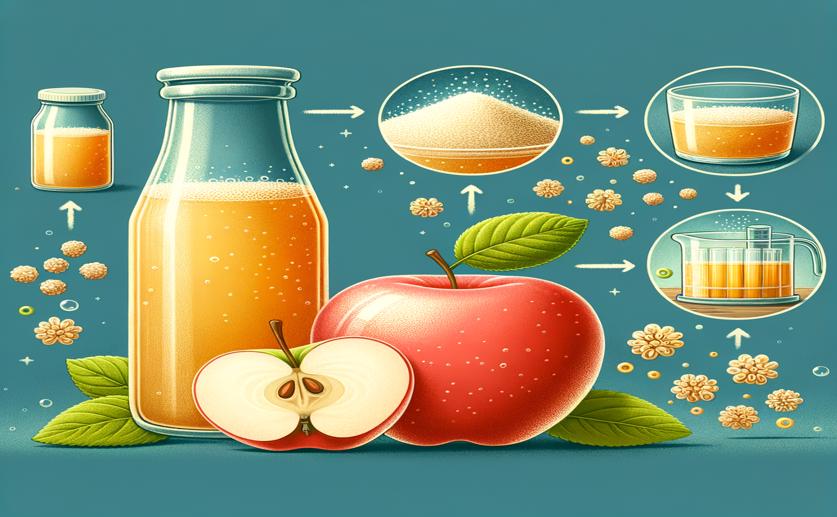
Removing Harmful Toxins from Apple Juice Using Yeast
Greg Howard
22nd May, 2024

Image Source: Natural Science News, 2024
Key Findings
- Researchers at Northwest A&F University found that the yeast K. marxianus YG-4 can detoxify the harmful mycotoxin PAT in apple juice
- K. marxianus YG-4 removes PAT through adsorption, binding it to the cell wall, and degradation, converting it into a non-toxic compound
- The detoxification process not only makes the apple juice safer but also enhances its nutritional value by increasing organic acids and polyphenols
References
Main Study
1) Detoxification of Mycotoxin Patulin by the Yeast Kluyveromyces marxianus YG-4 in Apple Juice.
Published 21st May, 2024
https://doi.org/10.1021/acs.jafc.4c02963
Related Studies
2) A rapid and simple ratiometric fluorescent sensor for patulin detection based on a stabilized DNA duplex probe containing less amount of aptamer-involved base pairs.
3) Identification of mouse metabolic variations related to patulin-induced acute and subacute hepatotoxicity by ultra-high-performance liquid chromatography high-resolution mass spectrometry.
4) Ability of inactivated yeast powder to adsorb patulin from apple juice.



 20th May, 2024 | Jenn Hoskins
20th May, 2024 | Jenn Hoskins